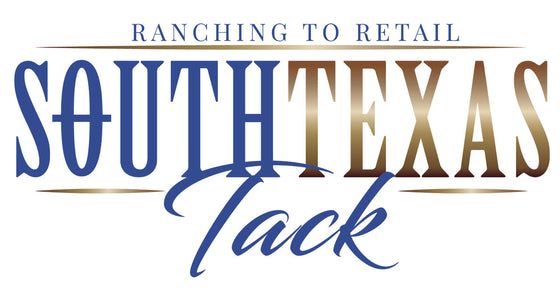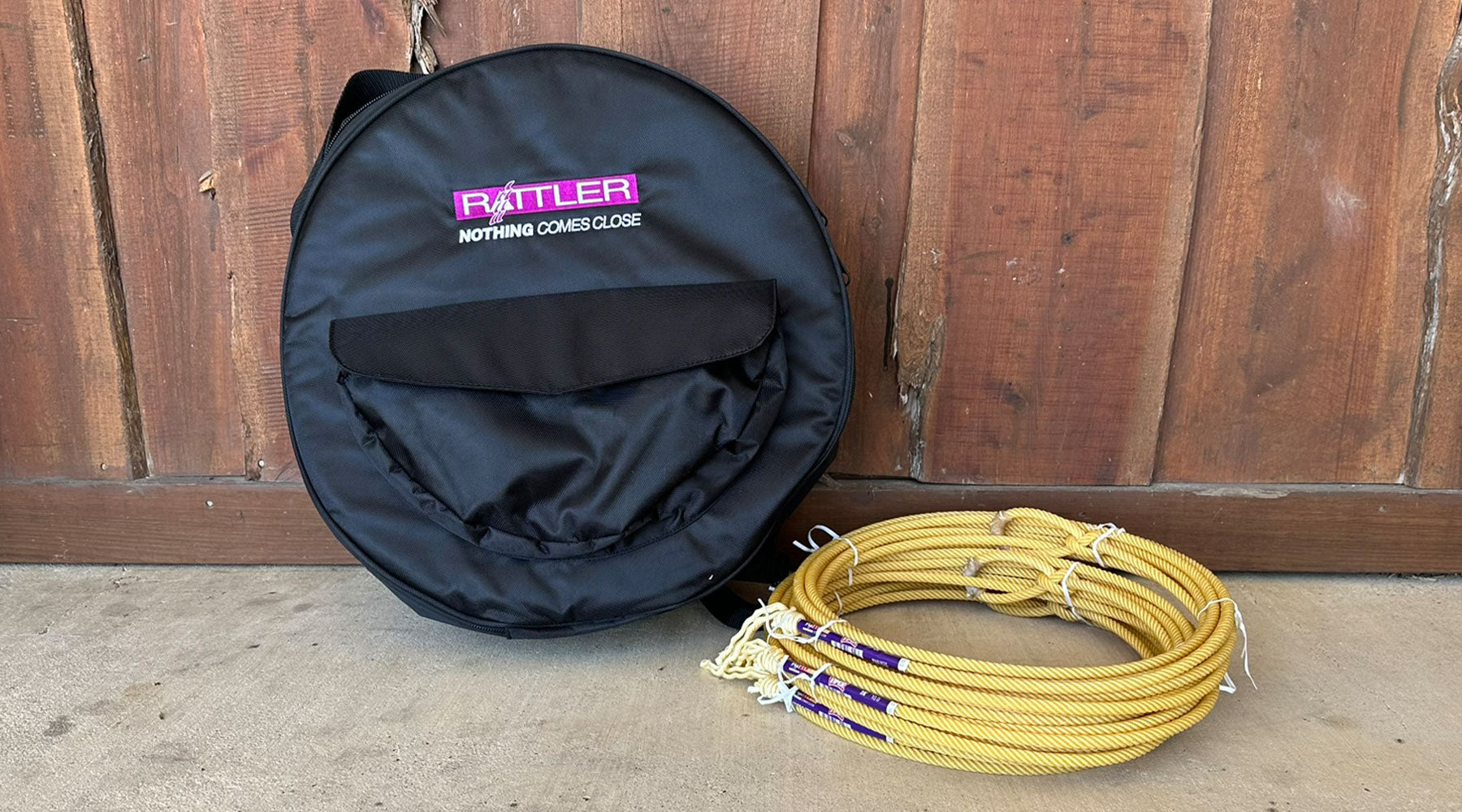-
One of the simplest things to practice on the Heel-O-Matic Bones 2.0 is to just lay the loop on nice and easy, without swinging first. This is where everybody should begin. A lot of instructors will teach a beginner this first, so they can learn to feel where the rope is. Pretty soon, they can swing once and rope it; the mechanics are there to actually let go of the loop. A lot of ropers can benefit from going back to this exercise—if they are splitting the horns, for instance. It is amazing to watch people struggle with this drill the first time, even experienced ropers, because often they have no idea where their tip or bottom strand is.

- As you practice this, get your left hand involved. By this I mean your left hand should be pushed forward, under (toward) that left horn like you see here. A roper will often lock their left hand up, and it doesn’t move, instead of using it. That left hand is your rein hand, and if you lock it up and don’t involve it, you are going to do the same thing on your horse. This can cause you to pull back or otherwise rein your horse out of position, for example.

- Heeling, you also need to involve your left hand, and can practice on the Heel-O-Matic Hox. As you practice your heel loop, push your left hand forward. Don’t ask for separation between the horse and steer with your left hand (by lifting), and don’t hurry to pull your slack and simulate a real run. If you hurry on the ground, you will hurry on your horse. If that left hand gets too high, you will lean back and not finish the delivery (3A). Or, the horse will short you, and you will stab an outside leg. Instead of lifting your left hand to get separation, work on getting your horse to go the same speed as the steer—then position is the easiest thing in the world!


- Just like we practiced for heading on the Bones 2.0, you can also practice laying it on/not letting go on the heel side. A good way to do this (and to practice patience) is to wait for that bottom strand to come all the way around and catch it in your hand, after you rope two feet.

- Horseback, an exercise I recommend on the Heel-O-Matic Ultimate Ground-Driven Trainer is the Circle Drill. I like circles, because you can get on the outside of the steer to work on the corner, or you can stay inside and keep your horse tucked up and help prevent him from getting lazy and dropping a shoulder. In a small circle (approximately 80 feet) he will consciously watch where he is. Before you throw, you want to work on your position, and make sure your horse is level and not pushing out any direction. In the horse’s eyes, the dummy is always climbing in this drill, and it makes a horse mind his manners as far as body and head position. Most ropers who have never practiced this tend to cross over behind the steer, or get too far inside, and it tends to amplify what they do on live cattle. This drill lets you practice being square with the dummy (instead of maneuvering at the last minute to see your shot). Best of all, you can work on it a long time without wearing your horse out, until he stays there and stays square.

-
Next, I like to practice the Stop Drill. This is the least fun exercise, but my favorite. You still work in a circle, but have your driver let off the gas and coast to a stop. If your horse oversteps his boundary, don’t jerk on him, just stop him, back him into position, and let him think. Keep doing this until he starts watching the cow (dummy). Eventually, he will start to watch and rate without your help. Gently increase speed and stop a little faster until the horse does it all on his own. Do this on the heeling side (outside) to work on the corner, then switch inside to work on heading. If a horse gets too pushy and pulls at all, stay in the circle, kick him back up and put him back out there in position until you have control of where the corner is. I think a lot of ropers don’t have control of that corner; their horses get hot and excited, so do they, and they jam it up. It is better to be a little late than early; in my opinion, your odds are better.

- You can also practice the Stop Drill, for heading, on the Heel-O-Matic Drifter. I pick a box, and that’s where I want to be position-wise when I rope. Personally, I want my body in that box; some people want their horse’s shoulder or head in the box. If my horse doesn’t keep my body inside that box, we will correct that with this drill. If we are there, I leave my horse alone. But if he gets too high, for instance, and causes me to split the horns, I will stop, back up and start again just like I did on the heeling side.

-
The Drifter is ideal for heeling practice. A regular roping dummy will just make a soft or round of the horse. Suddenly the horse is behind the steer, instead of in his lane! A drill we do is to turn it as sharp as we can, literally back over its own tracks, and go straight up the arena like you see in the photo. This is great for ropers who struggle with patience and position. Due to the Drifter’s ability to snap back so fast, the roper is often in there too tight, hits the dummy and makes a mess but they quickly realize how to back off, wait and get in position. When they go back to riding a normal corner after this drill—man, it is gold! It takes confidence to stay back. If you are patient, control your entry, and let your horse see the corner it is a quicker and cleaner shot than hurrying around the outside. It is important for a heeler to be patient. I have never seen a pro roper ride too high on one of these machines. They always wait, let the corner develop, and then when they ride into that box (position) they are ready to rope.



